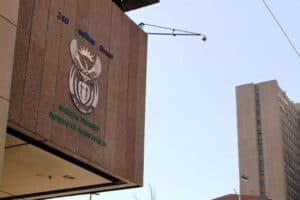As a prepaid user, there’s one thing you should never do …

There exists a perception that buying prepaid electricity at the start of the month versus, say, the middle of it, is far cheaper. This is the ‘advice’ constantly dished out by residents on community Facebook and WhatsApp groups. However, this is only half right.
The main reason behind consumers experiencing electricity becoming more expensive through the month is incline block tariff structures.
The inclining block tariff (IBT) system was originally implemented by regulator Nersa to cushion low-income households that use very little electricity. Municipalities ended up also implementing this structure.
ALSO READ: ‘Declaring Eskom crisis a national state of disaster will reduce load shedding’ – DA
How it works
These tariff systems divide the price of electricity into several blocks (typically around three).
The price per unit – or kilowatt hour (kWh) – is cheapest in the first block.
As usage increases, the tariff moves into block two, where the price per unit is more expensive. And then the third, and so on. The moves between these prices per unit are all automatic. At the end of the month, the usage is reset, and the customer starts the next month in block one.
Because this all happens dynamically, it does not matter whether a customer buys R1 000 of electricity at the start of the month, R500 at the start and R500 in the middle, or R250 every week.
ALSO READ: Load shedding on the horizon? Eskom urges South Africans to switch off lights
As is evident from the following breakdown, whether R1 500 of electricity is purchased at the start of the month, broken down into R1 000 and R500 later on, or whether there are three equal purchases of R500 each, makes no difference to the number of units (or kWh) one gets for the total spend, and therefore no difference to the average price per kWh/unit.
Other fees
One might consider the actual fee for prepaid electricity transactions. Banks can charge as much as R2.70 per purchase, meaning that multiple purchases through a month will mean multiple instances of this fee. Often, though, purchases made on banking apps are free or at a minimal charge.
Importantly, this analysis does not include prepaid meters installed by landlords for what is politely referred to as ‘sub-metering’.
The pricing on these meters is often higher than the tariffs published by Eskom or municipalities and is either flat rated (at a higher rate per unit) or uses the incline block tariff system.
These also often include building recovery rates (between 0% and 5%, for electricity use in common areas), channel fees (typically 3% to 5%, for the recharge transaction) and a service fee (as much as 10%). This means that for each recharge, around 15% could go to fees, with another 15% being value-added tax (Vat). On a R1 000 purchase, this means only R700 would be used for the purchase of actual electricity units.
Monthly usage is critical
Putting aside how purchases are split during the month, it is vital that consumers do not buy more electricity than they will use in a month.
ALSO READ: Eskom confirms plans for municipalities to take over debt-ridden townships
Unused units (kWh) are carried over to the next month – but that is exactly when things reset to ‘lowest block’ pricing, while the unused units will generally have been purchased at a higher per-unit rate.
In the above analysis, one can see that if a household buys R2 500 of electricity but only uses R1 500’s worth, their average price per unit is R2.46.
But it’s the difference between that price (of the 364 unused units that are carried over) versus the price in block one (R2.10) that’s key.
In this example, the customer is unnecessarily paying 17% more for their first 350kWh.
Therefore, it is important to ensure that if one is on an IBT tariff structure, that as few units as possible are carried over to the next month.
At low numbers of units, say, 50, the price difference isn’t that material. But it would be foolish to buy R2 000 worth of electricity if one only uses R1 000 worth.
Good news
In its most recent tariff application, Eskom says the IBT as a tariff structure “is no longer appropriate, is disliked by customers, and is complex to understand and explain”.
For this reason, Eskom proposes “removing the IBT structure”.
It wants to reintroduce fixed network charges for residential users and introduce a time-of-use tariff.
While not really applicable in the prepaid space, Eskom notes that, generally, the IBT structure “greatly incentivises higher-consumption customers to use alternative energy sources and energy efficiency, resulting in a real revenue loss” for the utility.
ALSO READ: New minister of electricity faces a department born out of failure
In a survey of Eskom customers last year, 59% of respondents said they understood how the tariff works. More than half (54%) said they “have a negative opinion about the tariff, because of the tariff being perceived as punitive, unfair, stating challenges around affordability and the high cost of living”. A remarkable two-thirds of respondents (67%) said “they do not believe that you need to pay more per unit if you use more electricity” on an IBT structure. Eskom’s retail tariff plan, which includes the dropping of IBT, has not yet been approved by Nersa.
This article originally appeared on Moneyweb and was republished with permission. Read the original article here.
NOW READ: Eskom mum on new electricity minister to resolve load shedding






